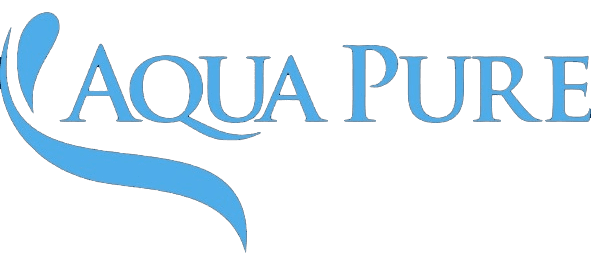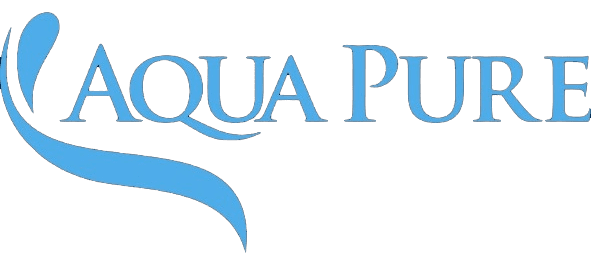If you draw your water from a private well anywhere in the Austin area—Travis, Williamson, or Hays County—you enjoy independence from city water. But you’re also the “water utility” for your own home. That means staying on top of common Hill Country well issues like bacteria, nitrates, hardness, and emerging contaminants such as PFAS—plus nuisance minerals that stain fixtures and tear up appliances.
This guide breaks down what Austin-area well owners really face, how each contaminant affects health and your home, and which testing and treatment options actually work here.
Why Austin wells are unique
Hardness is the rule, not the exception.
Calcium and magnesium levels often far exceed what’s considered “moderately hard,” leaving thick scale in water heaters, dishwashers, and on fixtures.
Karst aquifers can be “leaky.”
After heavy rain, bacteria and surface contaminants can move quickly through fractures into wells that aren’t properly sealed or protected.
Agricultural and suburban growth
Ups the risk of nitrates (from fertilizers, animal waste, and septic systems), especially for shallower wells.
Municipal Austin water is disinfected (chlorine or chloramine) and monitored; private wells are not regulated. You’re responsible for testing and treatment.
The big three for Austin wells: bacteria, nitrates, hardness
1) Bacteria (Total Coliform and E. coli)
- What it is: Coliforms are indicator organisms; a positive coliform test means a pathway exists for pathogens. E. coli indicates fecal contamination.
- Health impact: Acute gastrointestinal illness and, for vulnerable individuals, more serious infections.
- Austin angle: Flash floods and storm events can drive rapid changes in bacterial counts in karst terrain. Poor well caps, shallow wells, or flood-prone locations are higher risk.
Fixes that work:
- Immediate: If a lab detects bacteria, consider shock chlorination (a one-time disinfection of the well and plumbing) followed by retesting.
- Long-term: Install a continuous disinfection barrier—most commonly UV (ultraviolet) purification sized to your flow rate. UV inactivates microorganisms without chemicals, but it must be preceded by good sediment/iron filtration so the light can penetrate.
Pro tip: Place UV after a 5-micron sediment filter and after a softener (if you have one) to minimize fouling and ensure proper dose.
2) Nitrates
- What they are: Soluble nitrogen compounds (measured as nitrate-N). Often from fertilizers, septic systems, and livestock runoff.
- Health impact: High nitrate levels can cause “blue baby syndrome” (methemoglobinemia) in infants and are a concern for pregnant people. They’re also flagged for broader health risks.
- Austin angle: Semi-rural properties and homes with nearby septic fields see higher odds.
Fixes that work:
- Point-of-use Reverse Osmosis (RO): Excellent for drinking and cooking taps; removes nitrates effectively.
- Whole-home anion exchange: A specialty resin system targeting nitrates across the house (useful if you want nitrate reduction for showers/laundry too).
- Source control: Evaluate well construction, casing integrity, and distance from potential sources (septic drain fields, fertilizer storage).
Important: Standard water softeners do not remove nitrates. You’ll need RO or anion exchange.
3) Hardness (Calcium & Magnesium)
- What it does to your home: Scale on fixtures, cloudy glassware, stiff laundry, soap scum, reduced water heater efficiency, and shortened appliance life.
- Taste/feel: Flat taste, dry skin/hair, and slimy feel when soaps don’t rinse clean.
Fixes that work:
- Salt-based water softener (ion exchange): The proven method to actually remove hardness minerals and protect plumbing and appliances.
- Salt-free conditioners: Helpful for some scale control but don’t remove hardness; think of them as anti-scale “assist,” not full protection.
Explore options: Aquapure Water Softeners | Aquapure Water Treatment
Other contaminants Austin well owners ask about
Iron & Manganese
- Clues: Orange/brown staining (iron), black/gray staining (manganese), metallic taste, clogged fixtures.
- Treatment: Sediment prefilters, air-injection oxidizing filters, or catalytic media—and sometimes a softener downstream for any residual hardness.
Hydrogen Sulfide (H₂S)
- Clues: “Rotten egg” odor, especially hot water.
- Treatment: Oxidation/filtration systems, or anode rod changes in water heaters; sometimes aeration.
Low pH / Corrosivity
- Clues: Blue-green stains (copper corrosion), pinhole leaks, metallic taste.
- Treatment: Neutralizing filters (calcite or calcite/blend) to raise pH before it touches copper plumbing.
Sediment & Turbidity
- Clues: Cloudy water, grit, frequent filter clogging.
- Treatment: Properly sized spin-down or cartridge sediment filters (5–20 microns depending on well yield), sometimes with automatic backwashing.
PFAS (“forever chemicals”)
- Context: Emerging contaminants found in many regions nationwide. Private wells near industrial sites, airports, or fire training areas are higher risk.
- Treatment: Activated carbon or reverse osmosis are the go-to technologies for reducing PFAS at the tap; whole-home carbon can help with bathing and laundry.
Chlorine/Chloramine (if you switch between city and well, or blend)
- Clues: Pool-like taste/odor from municipal supplies or emergency connections.
- Treatment: Catalytic carbon for chloramine; activated carbon for free chlorine.
How to test your Austin well—smart, simple, and reliable
1) Start with a baseline panel (annually):
- Bacteria (total coliform/E. coli) – presence/absence
- Nitrate/nitrite
- Hardness, iron, manganese
- pH, alkalinity, TDS
- Chloride, sulfate
- Lead and copper (especially in older homes)
- Arsenic (intermittently in Texas wells)
- PFAS (if there’s a potential exposure pathway or extra peace of mind is desired)
2) Test after heavy rains, floods, construction, or well work. Karst geology can change water quality quickly; don’t assume “last year’s test” still applies after big weather.
3) Match the test to the treatment. For example, if you’re choosing a UV system, you’ll want turbidity and iron low enough (via prefiltration) to ensure UV dose is effective. For nitrate, confirm with a lab test and then retest after installing RO.
4) Keep records. Save lab results and filter service logs; they help you right-size systems and track trends.
Want help choosing the right panel for your well? Explore Aquapure Water Treatment or request a free water test.
Building a treatment stack that works in Austin
Here’s a proven, layered approach for many Hill Country wells. Not every home needs every step—but the order matters:
- Sediment prefiltration
- Spin-down or cartridge (20 → 5 microns) to protect everything downstream.
- Spin-down or cartridge (20 → 5 microns) to protect everything downstream.
- Iron/H₂S/Manganese control (if present)
- Air-injection oxidizing filter or catalytic media to keep UV and softeners from fouling.
- Air-injection oxidizing filter or catalytic media to keep UV and softeners from fouling.
- Water softener (for most homes here)
- Protects heaters, dishwashers, and plumbing from hardness scale. See Aquapure Water Softeners.
- Protects heaters, dishwashers, and plumbing from hardness scale. See Aquapure Water Softeners.
- UV disinfection (if bacteria risk exists)
- Installed after good filtration/softening for clear water and reliable dose.
- Installed after good filtration/softening for clear water and reliable dose.
- Whole-home carbon (optional)
- Reduces tastes/odors, chlorine/chloramine (if you ever connect to city water), and some organics; specialized carbon can target PFAS.
- Reduces tastes/odors, chlorine/chloramine (if you ever connect to city water), and some organics; specialized carbon can target PFAS.
- Point-of-use Reverse Osmosis at the kitchen sink
- “Polishes” drinking/cooking water and removes nitrates, PFAS, and many dissolved contaminants that softeners or carbon don’t fully address. Add a fridge line if desired.
- “Polishes” drinking/cooking water and removes nitrates, PFAS, and many dissolved contaminants that softeners or carbon don’t fully address. Add a fridge line if desired.
Sizing matters. A common mistake is installing filters that are too small for Austin households with multiple showers and irrigation. Undersized media tanks channel and fail early. Make sure systems are matched to your well’s flow rate and peak household demand.
Maintenance: the secret to safe, great-tasting water
- Replace cartridges on schedule. A clogged 5-micron filter can tank pressure and let debris bypass.
- Sanitize annually. Shock the well and disinfect plumbing if recurring bacteria is a problem (and verify wellhead integrity).
- Service media systems. Backwashing filters need correct cycle times; softeners need the right salt and occasional resin checks.
- UV lamps: Replace bulbs yearly and clean sleeves—UV output drops over time even if the light’s on.
- Retest. Especially after floods or if taste/odor/pressure changes.
Choosing equipment without the hype
Look for:
- NSF/ANSI certifications relevant to the contaminant (e.g., nitrate reduction, cyst reduction, chlorine/chloramine, PFAS).
- Local experience with Hill Country wells—someone who asks about your static level, pump size, casing, and nearby septic or ag activity is worth listening to.
- A plan, not just a product: Sediment → specialty filtration (as needed) → softening → disinfection → RO for drinking is a logical, flexible template.
See options and get guidance here: Aquapure Water Treatment | Aquapure Water Softeners
Local Concerns:
Q1: How often should I test my Austin well?
Q2: My water turns cloudy after storms. Is that normal?
Q3:Do softeners remove nitrates or PFAS?
Q4: Will boiling water remove nitrates or PFAS?
Q5: We sometimes connect to Austin city water. Should I treat for chlorine or chloramine?
Q6: What’s the rotten-egg smell in my hot water only?
Q7: Our fixtures have white crust and our water heater is noisy—related?
Q8: Is UV enough for all contamination?
Q9: Can I install systems in any order?
Q10: How do I know what size system I need?
Ready to make a plan?
You don’t have to guess. Start with data, then build a right-sized solution for your home:
- Explore solutions: Aquapure Water Treatment and Aquapure Water Softeners
- Get personalized advice: Request a free water test or get a quote
With the right testing and a thoughtfully layered system, Austin well water can be safe, great-tasting, and gentle on your home—for years to come.



